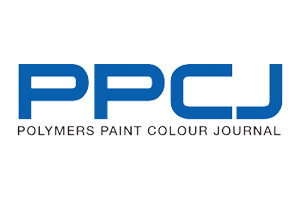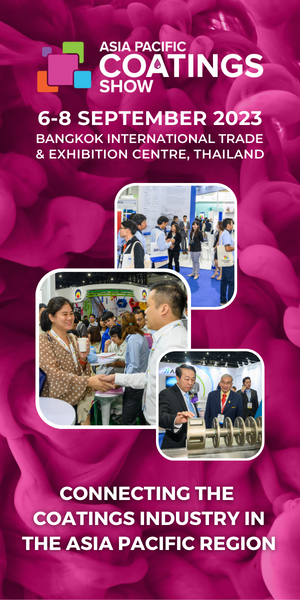
White/white pearl dominates the global automotive colour popularity ranks for the second consecutive year, according to the 2012 DuPont Automotive Color Popularity Report. Black/black effect moves into second place in the global ranks this year, largely due to the increased popularity in the Asia Pacific market as this colour has a worldwide perception of high quality and luxury. Silver fell to third, as its popularity has waned due to its overall gradual decline, especially in the critical large automotive markets of Europe and Asia.
The DuPont report, in its 60th year, is the largest and longest running report of its kind in the automotive industry. It is the only report to include global automotive colour popularity rankings and regional trends from 11 leading automotive regions of the world.
White/white pearl moved to top the ranks in Europe in 2012, and was in the leading position as the most popular car colour in North America (USA and Canada), Japan, South Korea, Russia, South Africa and Mexico. Overall, white/white pearl represents 23% of the global market in DuPont’s 2012 report.
Over the past decade, white has held significant rankings in automotive colour popularity and is widely seen in other consumer products worldwide. During this timeframe, white’s popularity had been highlighted across all vehicle segments, though historically, it had been most popular among the truck segment. Past advancements in pearlescent whites enabled this colour to initially break into the luxury segments.
"Today, white tri-coats are more readily applicable to the global manufacturing base and evoke quality and value among a variety of vehicle segments," according to Nancy Lockhart, DuPont colour marketing manager. "Solid whites have been seen in vanilla shades, stone shades and the current preference of bright whites."
Black/black effect led among vehicle colour popularity in China, but took second place in the global ranks with 21% of the world’s share of automotive colour. Silver rounded out the top three global colour choices, topping the ranks in South America, Brazil and India, but slipped four percentage points to just 18% of the overall global automotive market from 22% last year.
"Silver peaked during the start of the digital age between 2000 and 2006," said Lockhart. "We’re seeing more luxury vehicle purchases now that the economy has started to stabilise, and vehicles painted black/black effect are seen as luxury status symbols in several key global markets."
Red, grey and brown/beige each gained a percentage point since last year’s report, while blue maintained equal share from the 2011 rankings.
The top global vehicle colors in DuPont’s report are as follows:
1. White/White Pearl – 23%
2. Black/Black Effect – 21%
3. Silver – 18%
4. Gray – 14%
5. Red – 8%
6. Blue – 6%
7. Brown/Beige – 6%
8. Green – 1%
9. Yellow/Gold – 1%
10. Others – 2 %
White gains in Asia Pacific – leads Japan and South Korea, as black takes China; silver tops in India
White, black and grey are the top colours in the Asia Pacific region overall, but white seized the lead this year from silver, with 22% market share in the region. Black and grey were 21 and 20% respectively, while silver dropped to fourth overall with just 14%. Red rounds out the top five colours in the region, with 7% of the overall market in 2012.
Japan’s affinity for white/white pearl continued in this year’s report for the sixth consecutive year, with the top spot and 27% share, up from 26% in 2011. At 22%, black/black effect increased in popularity and ranks second in Japan. Rounding out the top five, silver (17%), blue (8%) and gray (7%) fell in popularity this year, while red is growing in popularity, netting 6% of the overall Japanese market.
"The compact car segment in Japan shows more eco-trends with more natural and earthy colour choices, which we expect to see more of in the market moving forward," said Kumiko Ohmura, DuPont Color Marketing Manager, Asia Pacific.
South Korea has the highest popularity of white/white pearl in the Asia Pacific region at 28%, an increase of 3% over 2011 and overtaking the longtime leader, silver (23%), in the country by 3%. Black/black effect represents 16% of the South Korean market and grey colours 15% of vehicles in South Korea, with blue and red tied in fifth with 5% each.
For the first time, black/black effect topped the market in China, with 24% of the market, reaffirming the global association of black with luxury and high quality. Silver ranked second in China, with 20% of the market, while grey has increased this year to 17%, tying with white/white pearl. Red rounds out the top five overall at 9% in China.
India sees the lightest colours at the top of the colour popularity charts. Silver leads, with 28% of the overall market, while white/white pearl is a close second at 27%. In third, light versions of brown/beige rank with 12%, while grey follows with 11%. Black receives its lowest ranking globally in India, with just 7%.
North America – top three remain the same: white/white pearl, black and silver
North American vehicle colour in 2012 was once again dominated by white/white pearl, with 24% market share, putting it in first place for the sixth consecutive year. It also led the compact/sport and truck/SUV segment.
Black/black effect was at the top of the intermediate/CUV segment and luxury/luxury SUV segment popularity ranks. It represented 19% of the overall market, maintaining second place in vehicle colour popularity in North America. Compared to metallic versions, solid blacks are most favoured in the truck segment. Metallic blacks brought interest to the market and have been widely used in all segments, especially in luxury/luxury SUV.
For the first time since 1998, silver did not lead in any of the North American vehicle segments, which may be attributed to the increased influence of black and white as status symbols for luxury and quality. However, silver held steady in third place overall with 16% market share.
Grey rose two percentage points this year with increases in the truck, luxury and intermediate vehicle segments. The top four preferences, white, black, silver, and gray, have represented the majority of popularity the last 10 years.
Red rounded out the top five colour choices across each vehicle segment and consequently, overall in the region, with 10% of the market. Popularity rankings of red (10%), blue (7%), brown/beige (5%), yellow/gold (2%), and green (2%) show bright colours are widely noticed on the road but do not make up the majority of consumer preferences.
Europe – white/white pearl trumps black as top colour
In 2012, white/white pearl overtook black/black effect as Europe’s most popular vehicle hue. With 24%ent of the overall European market, white/white pearl also topped the compact/sport and truck/SUV categories in the region.
"The significance of white is represented in sustainability preferences and advanced design," said Elke Dirks, DuPont colour designer for Europe. "White pearlescent shades are growing in popularity as well, although their use is minimal compared to solid whites."
Black/black effect has been losing popularity in the region since it peaked in 2009, according to DuPont, and has slipped to second place overall, with 23% of the market. However, it maintains its leadership position in the intermediate/MPV and luxury/luxury SUV categories.
Grey (15%) and silver (14%) have both decreased in popularity this year, while blue continues to increase, grabbing eight percent of the overall European market in 2012.
DuPont 2012 Trend Show "Color Mind" showcases global colour trends
To complement its 60th Global Automotive Color Popularity Report, this year’s annual DuPont global colour collection represents a collaboration of new styling trends and technologies showcasing a colourful inspiration for automotive designers.
The latest collection, "Color Mind," showcases trends that are focused on four groups, as follows:
Exceptional luxury and quality are associated with colours in the "Noble Ambition" group. These colour selections are those most associated with luxury goods throughout history. Colours include a jewel-like green, "Ivy League," a pearlescent white, "Prince Charming," and a bold bronze, "Nobelist."
High visibility design trends and modern colours exaggerated in the "Individual Attitude" group. These stylish colours are intended for the fashionable individual who wants to be noticed. Colours include an intense red solid colour, "Eye Candy," a dark teal, "Miss Personality," and a soft muted pink metallic, "Lone Wolf."
Innovative technologies and energy initiatives are brought forward in the "Progressive Nature" group. Some of the metallic variations are "Electronic Beat" and "Virtual Vision." Natural colours include beige, "High Tech Nature" and a medium earthy brown, "Futurist."
Historical automotive colours are revived in the "Authentic History" group. In this group, past favourites are reformulated with a modern twist. Key colours are "Re-imagined Gray" and "Green Revival." Others include a bright red, "Famous," and a grayish blue, "Global Heritage." These latest colour trends are formulated into leading technology and application processes for today’s automotive manufacturing.




